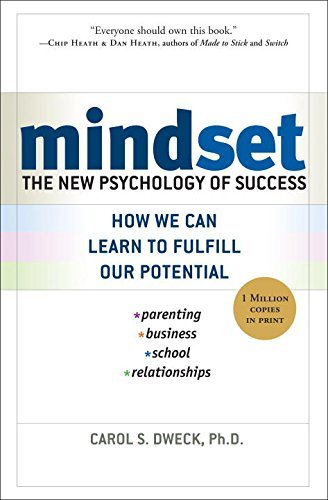From ZERO to HERO: How did this epic rebrand fuel this company's comeback?
Today, let’s take a look at one business case study that modeled the importance of one of the tenets of RDS. Keep reading to know how this ride-hailing app redefined its identity through the lens of RDS’ 6th tenet. |
|
From ZERO to HERO: How did this epic rebrand fuel this company's comeback? In the fast lane of business, the only constant is change. As the Greek philosopher Heraclitus said: “Everything changes, and nothing remains still; and you cannot step twice into the same stream.” This insight is particularly relevant in the world of business, where staying static can lead to a company’s downfall. Sometimes, to thrive and survive, businesses have to switch gears and overhaul their entire engine. Did you know that in 2018, one of the most recognized ride-hailing services in the world decided to do just that? Faced with mounting criticism and leadership controversies, this company hit the brakes, took a sharp turn, and embarked on a complete overhaul of its identity. So, for today’s article, we’ll explore the motivations behind that rebranding, the lessons such a move offers, and whether or not the rebrand succeeded. A Step Towards A New Direction: How Uber Boldly Reinvented Itself
Uber Technologies Inc., founded in 2009 by Travis Kalanick and Garrett Camp, revolutionized urban transportation. The company quickly became synonymous with convenience and innovation , expanding beyond ride-hailing into food delivery, freight transport, and more. Yet, despite its dominance, Uber’s journey wasn’t without bumps in the road. In 2018, Uber found itself at a crossroads, plagued by a toxic corporate culture and leadership scandals. So, to steer itself back on course, Uber embarked on a mission to reinvent itself. The rebranding began with the appointment of a new CEO, Dara Khosrowshahi, who set the tone for a complete transformation. One of his first actions was to change the company’s logo—a symbolic shift from Uber’s previous identity. The new logo, introduced in 2018, was a clean departure from its predecessor. The old dark teal logo, which had become associated with the company’s troubled past, was replaced with a sleek wordmark.
This new design was more than just a visual update; it also represented a shift in Uber’s core values— mobility , accessibility , and friendliness. There’s more! The rebrand was not just about aesthetics. Uber also diversified its offerings, expanding beyond passenger transportation to include services like Uber Eats and Uber Freight. This broadened the concept of mobility, making Uber not just a ride-hailing service but also a comprehensive platform for various transportation needs.
Accessibility became a key focus as well. Uber enhanced its app with features like upfront pricing and real-time tracking, giving users more control and predictability. Furthermore, the addition of text-based communication made the service more inclusive for riders and drivers with hearing impairments. What else did Uber do? To further emphasize its new identity, Uber overhauled its brand system by adopting a composition system for its advertising and promotional materials, ensuring the brand was easily recognizable across all platforms. Warmer and friendlier designs replaced the cold and impersonal aesthetics of the past, reinforcing the message of accessibility and approachability. This bold rebranding effort paid off! By breaking away from its previous identity, Uber distanced itself from the controversies of its former leadership. The clean visual break helped redefine the company’s image, pushing it into a new era of growth and success. The results of this bold move spoke for themselves! The company’s revenue jumped by 42%, from USD 7.94 billion in 2017 to USD 11.27 billion in 2018. Clearly, the rebrand not only redeemed Uber in the eyes of consumers but also attracted new users, driving up the company’s profits. Rebranding Done Right: The Key to Success In their book, “Driven,” Professor Joel Litman and Dr. Mark L. Frigo emphasize the importance of branding in driving high returns. According to Return Driven Strategy’s (RDS) Tenet 6 (Brand Offerings): “The value of branding and branding activities is in the time saved by the customer who can quickly understand the offering and the need it fulfills by simply recognizing the brand.” Uber’s rebrand is a great example of this principle in action! The transition from a confusing logo to a sleek wordmark made the brand more identifiable and easier for customers to understand. This saved time and mental effort, making it easier for users to choose Uber for their transportation needs. Moreover, the rebrand helped dispel the negative perceptions associated with the company’s past. By aligning its brand with values like friendliness and accessibility, Uber fostered deep emotional connections with customers, driving loyalty and trust. — Based on today’s case study, it is clear that rebranding can transform a company for better or worse. When done right, as Uber demonstrated in 2018, rebranding can lead to incredible success. The key to doing this right? It’s in clearly defining the brand’s identity and purpose, conducting thorough research, and ensuring that the rebranding strategies align with customer expectations and the company’s strengths. For those of you looking to reinvent your business, Uber’s story offers a valuable lesson: Sometimes, the road to success requires a sharp turn and a fresh start. By embracing change and boldly redefining your identity, you and your brand will not only survive but also accelerate to new heights. If you’re looking to gain a better understanding of Return Driven Strategy and Career Driven Strategy, we highly recommend checking out “Driven” by Professor Litman and Dr. Frigo.
Hope you found this week’s insights interesting and helpful.
Stay tuned for next Tuesday’s Return Driven Strategy! In 2013, Microsoft unveiled the Xbox One, its next generation gaming console. While the product itself was actually good, the way the company handled its unveiling almost led to a disastrous launch cycle. Learn more about the impact of customer dissatisfaction in next week’s article! |

Miles Everson
CEO of MBO Partners and former Global Advisory and Consulting CEO at PwC, Everson has worked with many of the world's largest and most prominent organizations, specializing in executive management. He helps companies balance growth, reduce risk, maximize return, and excel in strategic business priorities.
He is a sought-after public speaker and contributor and has been a case study for success from Harvard Business School.
Everson is a Certified Public Accountant, a member of the American Institute of Certified Public Accountants and Minnesota Society of Certified Public Accountants. He graduated from St. Cloud State University with a B.S. in Accounting.
SIGN UP FOR THE NEWSLETTER
The Business Builder Daily
Newsletter Signup
We will get back to you as soon as possible.
Please try again later.





